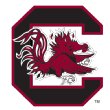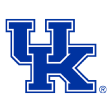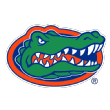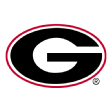Save the best for last, right? While almost all of the FBS programs attempting to play football this fall have already gotten underway, the SEC is still a week and a half from kicking off. When it does, we will witness a season full of fascinating questions. Does overwhelming raw talent (Georgia) trump a combination of talent and continuity (Florida)? How do fans react when a clearly awesome team (Tennessee, perhaps, or maybe Kentucky) goes 5-5? Are we taking a year off from hot-seat talk, or is Will Muschamp in trouble?
This has been the longest preview series in the history of the world — it began in February and will end, well, a week or two before the Big Ten ends up kicking off — but let’s talk SEC East.
Jump to: Vanderbilt | Missouri | South Carolina | Kentucky
Tennessee | Florida | Georgia

Head coach: Derek Mason (27-47, seventh year)
2019: 3-9 (1-7 in SEC), 106th in SP+
2020 projection: 1-9, 110th
Five best returning players: DE Dayo Odeyingbo, OLB Andre Mintze, ILB Dimitri Moore, S Tae Daley, RB Jamauri Wakefield
I use the phrase “pushing the boulder up the hill” a lot when talking about hard coaching jobs. It’s a solid go-to, quickly spelling out how hard it is to move a program forward and what happens the moment your momentum stalls.
Derek Mason’s momentum at Vanderbilt stalled out at the end of the 2018 season. In 2019, the boulder ran him over.
Though only 6-7, Mason’s 2018 Commodores were easily his best team yet in Nashville. The offense jumped to 24th in offensive SP+ behind quarterback Kyle Shurmur’s steadiness along with running back Ke’Shawn Vaughn’s explosiveness, and while the defense wasn’t great, it was good enough to help drag Vandy toward .500.
Vaughn returned last fall, but he was without his quarterback and offensive coordinator (Andy Ludwig, who went to Utah). The offensive line was a mess, the quarterback position was even worse, and after averaging 7.9 yards per carry in 2018, Vaughn had to do miraculous work to average even 5.2.
A rebuilt defense fell apart, too.
-
Vandy’s offensive SP+ ranking: 24th in 2018, 104th in 2019
-
Defensive SP+: 57th in 2018, 99th in 2019
-
Overall SP+: 39th in 2018, 106th in 2019
It took a bit of good fortune, in the form of a 2-0 record in one-score finishes, to reach even 3-9 last fall. Now, facing a 10-game SEC schedule without Vaughn, most of last year’s receivers and O-linemen and literally any experience at QB, winning a single game will require some favors from the football gods.
The defense should improve, at least. Its collapse last year was tied to youth — key sophomores at linebacker, freshmen and sophomores in the secondary — and players like end Dayo Odeyingbo, linebacker Dimitri Moore (who opted out for the season, then opted back in) and sophomore safeties Dashaun Jerkins and Brendon Harris could prove to be solid. Mason attempted to upgrade his line by adding tackle transfers from Florida (Malik Langham) and Oklahoma (Derek Green), and depth across the board is light-years better.
You have to score points, though, and I have no idea how Vandy’s going to do that. Senior back Jamauri Wakefield does return after missing 2019, and sophomores like WR Cam Johnson, RB Keyon Brooks, TE Ben Bresnahan and RT Tyler Steen could be ready for larger roles. But they will have to be very good, very quickly, for the Commodores to threaten SEC defenses.
The QB position is scary, and not in a good way. Four players threw passes last year, and they’re all gone. True freshman Ken Seals appears to be the most likely starting quarterback, though fellow freshman Mike Wright and untested juniors Jeremy Moussa and Danny Clark could also step in. Seals and Wright were reasonably well-touted, but with a gaping hole of a line and no truly proven skill-corps options, it’s hard to see how they thrive. It’s the reason SP+ projects the Commodores as at least 17-point underdogs in every game on the schedule. Yes, 17.

Head coach: Eliah Drinkwitz (first year)
2019: 6-6 (3-5), 39th in SP+
2020 projection: 4-6, 44th
Five best returning players: LB Nick Bolton, RB Larry Rountree III, DT Kobie Whiteside, FS Joshuah Bledsoe, RG Case Cook
In a normal offseason, we might be talking about what a great offseason former Appalachian State head coach, and Gus Malzahn protege, Eliah Drinkwitz had in his first months in Columbia. He retained some of former head coach Barry Odom’s key defensive assistants after the Tigers posted back-to-back top-25 rankings in defensive SP+. He not only beat out Bama to sign cornerback Ennis Rakestraw Jr. in February, but his celebration after doing so went viral. He used the grad transfer market to plug key depth chart holes. His first full recruiting class is shaping up to be Mizzou’s highest-ranked class in at least half a decade. He even somehow avoided throwing a giant public fit in August when Mizzou was given Alabama and LSU as extra SEC opponents.
This is good. And none of it matters when the games actually start. While the defense should again be sturdy, the offense has a lot of ground to make up if the Tigers are going to threaten .500.
Odom left Drinkwitz some presents up the defensive spine. As an unheralded true sophomore, Nick Bolton came out of nowhere to become one of the best linebackers in college football; he combined 7.5 TFLs with 10 passes defensed (two INTs, eight breakups) and 17 run stuffs last year. And while tackle Jordan Elliott is now a Cleveland Brown, battery mate Kobie Whiteside returns. In the secondary, senior safeties Tyree Gillespie and Joshuah Bledsoe are physical and versatile.
Coordinator holdover Ryan Walters does have a few questions to address on the edges of the defense, as Mizzou hasn’t had a stellar pass rush in a few years, and Jarvis Ware is the only cornerback to return out of the Tigers’ top three from last season. But there’s a lot to like here.
The offense has far fewer knowns. The quarterback will be either TCU transfer and former blue-chipper Shawn Robinson or redshirt freshman Connor Bazelak. Robinson did OK when thrown into the deep end in Fort Worth, and Bazelak got time late in 2019 before injuring his knee, but neither is proven. The line in front of them is remodeled, too, with three three-year starters gone and three back, including Rutgers transfer Michael Maietti.
If the dual-threat Robinson wins the job and the line holds up, the run game should be stellar. Larry Rountree III and Tyler Badie are a solid running back duo, with Rountree a major yards-after-contact threat and Badie a good pass-catcher. The receiving corps is a mystery, though. The Tigers lose last year’s top three targets, and Drinkwitz will have to craft something solid from a combination of transfers (Virginia Tech’s Damon Hazelton, Angelo State’s Keke Chism), semi-used juniors (former walk-on Barrett Banister, Jalen Knox) and freshmen. Hazelton, Chism and Knox have all flashed explosiveness at times, but they’ll all be in new roles. And with six SP+ top-25 opponents in their first seven games, the Tigers’ attack will have to jell immediately to avoid a rough start. Hard to count on that.

Head coach: Will Muschamp (26-25, fifth year)
2019: 4-8 (3-5), 47th in SP+
2020 projection: 4-6, 36th
Five best returning players: LT Sadarius Hutcherson, CB Israel Mukuamu, DE Aaron Sterling, RG Jovaughn Gwyn, WR Shi Smith
Maybe no one in the country is more prepared for an all-SEC schedule than South Carolina. Will Muschamp’s Gamecocks, after all, played 10 teams that finished in the SP+ top 40 last year and nine from the top 42 in 2018. They’re used to facing minimal tuneup games and maximum challenge.
Of course, being prepared for it and being good at it are two different things. They were 5-14 against said top-42 teams, 2-8 last year. Muschamp recruits at a top-20 level, but while he has rounded his defense into form and his special-teams output is excellent, he’s undergoing his third offensive restart in his fifth season.
Offensive coordinator Mike Bobo returns to the SEC after a few years as Colorado State’s head coach, and while the bar’s low (SC averaged just 17 points per game against top-40 opposition), the skill corps is a ghost town. Last year’s top three running backs are gone, as are six of the 10 players targeted with at least 15 passes. Blue-chip freshman Marshawn Lloyd is lost for the season with an injury, and two different quarterbacks — sophomore Dakereon Joyner and freshman Luke Doty — could log quite a few snaps at wideout. Considering how much quarterback Ryan Hilinski struggled with a full skill corps last year, that’s more than alarming.
Bobo’s history suggests he enjoys deep passing and a nice, slow tempo. The latter might be a requirement with the depth issues at hand, but we’ll see if Shi Smith and Josh Vann, former blue-chippers who averaged just 10.6 yards per catch between them last year, can do any sort of field-stretching. Colorado State transfer Collin Hill is aboard to push Hilinski, and the offensive line should improve after constant shuffling last year, but expectations are low. And that’s before we take into account the potential field position effects of losing a tremendous punter (Joseph Charlton) and punt returner (Bryan Edwards).
The defense could provide hope again after ranking 30th in defensive SP+ and holding Georgia, Appalachian State and Kentucky to 20 or fewer points each. The secondary was rock solid despite youth, and junior corners Israel Mukuamu and Jaycee Horn could be among the division’s best. The defensive line loses four of last year’s top six, but TFLs leader Aaron Sterling is back, and both tackle Keir Thomas and end/OLB Brad Johnson return from injury. Plus, freshman Jordan Burch is one of Muschamp’s most high-profile signees. The upside here is high.
After going 9-4 in his second year, Muschamp has won just 11 games in two years. Brutal schedules aside, the Gamecocks’ production hasn’t matched their potential, and they are, per SP+, projected favorites in just three games this fall. You could make a strong case that there should be no hot seat whatsoever for football coaches in the year of the coronavirus, but it’s safe to assume Muschamp is under pressure. That Sept. 26 home game against Tennessee is enormous for the team in garnet and black.

Head coach: Mark Stoops (44-44, eighth year)
2019: 8-5 (3-5), 35th in SP+
2020 projection: 5-5, 22nd
Five best returning players: C Drake Jackson, LB Boogie Watson, LT Landon Young, DE Josh Paschal, CB Brandin Echols
Almost every major tactical shift in college football began with a thought experiment. Don Faurot asked, “What if we turned our run game into a series of 2-on-1 fast breaks?” and created option football. Rich Rodriguez asked, “What if we turned every drive into a two-minute drill?” and created the modern hurry-up, no-huddle offense. Etc.
I’m not going to say what Kentucky did last year will change college football, but I’m intrigued. With starting quarterback Terry Wilson injured, head coach Mark Stoops and offensive coordinator Eddie Gran asked the question, “What if we just went with a full-time Wildcat quarterback?” Like many high school offenses, they elected to put the ball in the hands of their best playmaker (in this case, receiver Lynn Bowden Jr.) and go from there.
Bowden put together one of the most fascinating stat lines you’ll ever see — 1,495 rushing yards, 403 passing yards and 348 receiving yards — and after some up-and-down early performances, UK averaged 42.5 points per game and 8.1 yards per play in its last four games. After averaging 242 passing yards per game over the first month, the Wildcats averaged a triple-option-esque 57 afterward … and won eight games.
This was an incredible turn of events, and I have no idea what it means for this year. Wilson’s back in his old job, and almost everyone but Bowden returns for the UK offense, but what principles did Gran & Co. learn last year that they can now translate to an offense again built around Wilson, who can actually throw a bit and rushed for 726 non-sack yards himself in 2018? I’m really excited to find out. (Auburn transfer Joey Gatewood could also be an option at QB if Kentucky ever actually hears from the NCAA about his waiver request.) Running backs Asim Rose, Kavosiey Smoke and Christopher Rodriguez Jr. are all thick and mean, as is an offensive line that returns four starters.
The offense was a source of creativity, but the defense was a steadier source of quality. Stoops’ defense surged to 15th in defensive SP+ in 2018, and despite losing quite a few difference-makers, it held steady at 34th last year thanks primarily to a great pass defense. The pass rush remained excellent without 2018 star Josh Allen, and the secondary was lanky and physical. Linebacker Boogie Watson and edge rushers Josh Paschal and Jordan Wright should assure the pass rush still has pop, and the secondary’s loaded once more. The run defense might still be problematic unless enormous blue-chip freshman Justin Rogers makes an immediate difference in the middle, but this should be a top-30 defense again at worst.
SP+ projects UK 22nd overall; that would be the Wildcats’ best ranking since 1977 if it holds. It’s a shame that, with this year’s 10-game league schedules, that translates to only about a .500 record or so, but Stoops is building something long-term, and this won’t be Kentucky’s last chance at top-20 quality.

Head coach: Jeremy Pruitt (13-12, third year)
2019: 8-5 (5-3), 29th in SP+
2020 projection: 5-5, 19th
Five best returning players: LG Trey Smith, QB Jarrett Guarantano, LB Henry To’o To’o, WR Josh Palmer, S Theo Jackson
For a casual fan, it was pretty easy to take note of Tennessee in the preseason AP top 25 and chortle. Oh look, the Vols are overrated again, right? Just like in 2016 (when they were preseason ninth and ended 22nd) and 2017 (when they started out 25th and went 4-8)! And 2008 (started 18th, ended 5-7)! And 2005 (started third, ended 5-6)!
To be sure, the “1990s power gets a little too much credit for brief runs of competence” effect is prominent at times, whether we’re talking about Tennessee, Nebraska, Michigan or someone else. But if you scoff at this year’s No. 25 ranking, there’s a pretty good chance that you didn’t see Tennessee play late last season.
Specifically, you didn’t see the Vols’ defense.
After waffling between the 30s and 40s in defensive SP+ for the first few weeks of the season (and between the 40s and 50s overall), Jeremy Pruitt’s Vols clicked. Following a 35-13 loss to Alabama, they allowed just 4.5 yards per play and 15.5 points per game in their last six games, all wins.
During that span, the offense remained inconsistent but improved its baseline average (6.3 yards per play, 27.2 points per game), and UT went from 2-5 and 51st in SP+ to 8-5 and 29th.
The offense has questions to answer in the skill corps — three of last year’s top four pass targets are gone, and neither of the top two returning RBs (Ty Chandler and Eric Gray) topped even a mediocre 40% success rate on the ground. But the Vols are experienced at QB with Jarrett Guarantano back for another season, and the line boasts six players with a combined 82 career starts, including All-America guard candidate Trey Smith. If senior receiver Josh Palmer gets help from young blue-chippers like sophomore Ramel Keyton and freshman Malachi Wideman, the Vols should be able to top last year’s No. 73 offensive SP+ ranking, maybe by a decent amount. That’s a low bar, sure, but UT won’t need to score many points to stay in games.
The Vols’ primary defensive strengths last year: They never got torched (first in the country in gains of 30+ yards allowed), and they lit you up on blitz downs. Better, they attacked your QB from all angles. Only one player had more than three sacks (linebacker Darrell Taylor), but nine had at least two. Taylor’s now a Seattle Seahawk, but seven of the other eight are back, and Pruitt and coordinator Derrick Ansley appear to have plenty to work with.
Safety Nigel Warrior is gone, but the rest of the secondary returns intact. That includes three safeties (Theo Jackson, Shawn Shamburger, Jaylen McCollough) and three cornerbacks (Bryce Thompson, Alontae Taylor, Kenneth George Jr.) with lots of seasoning.
A top-25 performance might earn you only a .500 record this year, but even if the offense remains too iffy for the Vols to threaten in the East, they’re going to be an awfully tough out.

Head coach: Dan Mullen (21-5, third year)
2019: 11-2 (6-2), seventh in SP+
2020 projection: 8-2, fifth
Five best returning players: CB Marco Wilson, S Shawn Davis, QB Kyle Trask, TE Kyle Pitts, LT Stone Forsythe
Your view of Florida’s place in the national title race this fall is almost 100% determined by your view of Kyle Trask. That isn’t exactly profound — quarterback is the most important position in any team sport, of course — but Trask is a hard player to figure out.
After taking over for the injured Feleipe Franks last year, Trask posted a 25-to-7 TD-to-INT ratio and finished 10th in the country in Total QBR. But he thrived at least partially because of the game plan. His passer rating was 169.6 on first down, 148.0 on second and 139.2 on third, and Florida ranked only 53rd in blitz downs success rate. When conditions were favorable, he thrived. When they weren’t, he didn’t. And that was with Van Jefferson and Freddie Swain, last year’s top wideouts. They’re both now gone.
You have to go back to 2015, with Alabama’s Jake Coker, to find the last time a team won the national title without a surefire first-round talent behind center. Coker had the nation’s best defense at his disposal, and 2014 champion Cardale Jones had a crazy-good run game for distracting defenses. Florida’s defense will certainly be good, but will the Gators have enough going for them to make a run if Trask doesn’t enjoy a Joe Burrow-like senior leap? In this year of uncertainty, will continuity — a third-year coaching staff that has remained mostly intact, plus a second-year starting QB and strong overall returning production numbers — make up for whatever the Gators might lack in star power compared to other contenders?
I don’t know that answer, but I do know there’s still a lot to like about Mullen’s Gators. The offensive line returns three starters and adds Mississippi State transfer Stewart Reese and his 33 career starts. The receiving corps still features efficient tight end Kyle Pitts and big-play threats in Trevon Grimes, Jacob Copeland, Kadarius Toney and Penn State transfer Justin Shorter. And the defense could be scary.
Coordinator Todd Grantham can get a little predictable in his aggression at times, but he’s brought results: He inherited a defense that ranked 33rd in defensive SP+ and improved it to 17th in 2018 and seventh in 2019. With most of last year’s two-deep back, Florida starts out this year projected third. Without Jonathan Greenard, Grantham needs a new ace pass-rusher, but he’s still got end Jeremiah Moon, and his linebackers are dynamite. So is a secondary that includes safety Shawn Davis and corner Marco Wilson.
The biggest question is the offensive run game. Florida was a dismal 107th in rushing success rate, which put a lot of pressure on Trask to make plays on early downs. The line is much more experienced this year, but a back still needs to step up, be it junior Dameon Pierce, Miami transfer Lorenzo Lingard or someone else. If they can run the ball and defend as well as it seems they could, Trask could certainly play at a Cokerian level and lead a Playoff push.

Head coach: Kirby Smart (44-12, fifth year)
2019: 12-2 (7-1), fifth in SP+
2020 projection: 8-2, fourth
Five best returning players: S Richard LeCounte, WR George Pickens, RG Ben Cleveland, LB Monty Rice, DE Malik Herring
Four years into his Georgia tenure, former coach Mark Richt was 42-10 with a conference title and a national title what-if in the form of Terrence Edwards’ late-game drop against Florida in 2002, which cost the Dawgs a perfect record.
Four years in for Kirby Smart, and he’s 44-12 with a conference title and a national title what-if in the form of an overtime loss to Alabama in 2017’s title game.
Comparing Smart to Richt with Georgia fans is fun because it’s simultaneously encouraging (Richt has the second-most wins and AP top-10 finishes of any Georgia coach ever) and foreboding (Richt never got over the hump in the national title hunt).
Smart’s recruiting has been otherworldly, but like Richt, he hasn’t quite mastered offense yet. In Richt’s first four seasons, he had three top-six finishes in defensive SP+ but had an average offensive ranking of 26th; Smart’s 2019 defense was ranked No. 1 (and starts 2020 there, too), but his first four offenses have averaged 29th.
If the Richtian similarities continued for one more year, that might not be the worst thing in the world: In Richt’s fifth year, the Dawgs lost twice in conference play but took their second league title. In 2020, that likely gets you into the CFP.
We know what the defense will likely deliver: Suffocation. Of the 19 defenders who took at least 200 snaps last year, 14 return. There are all-conference candidates at almost every position, but the collective swarming ability is what stands out. Georgia is as physically impressive as any Alabama defense has been under Nick Saban, and they were both fifth in success rate (top 10 on both standard and passing downs) and first in marginal explosiveness.
It’s likely up to the offense, then. The Dawgs were 24th overall in success rate in 2019, but they didn’t make many big plays, and once they were behind schedule, drives fell apart — they were 11th in standard downs success rate but 102nd on passing downs. That’s what you would expect from a triple option-offense, not one overflowing with blue-chippers.
New offensive coordinator Todd Monken will attempt to craft something interesting around former USC quarterback JT Daniels (assuming he beats out redshirt freshman D’Wan Mathis for the job) and hope that sophomore receiver George Pickens is ready to resume his late-2019 breakout — he had 322 receiving yards and two TDs in his first eight games and 405 and six TDs in his last six. Senior Demetris Robertson and a big batch of freshman blue-chippers will try to play solid complementary roles.
Though the line does have to replace four of the five players with 600+ snaps last year, the run game should be fine with backs Zamir White and James Cook. It all comes down to Daniels’ ability to catch up to the chains (and the receivers’ ability to help him out in that regard). If the offense is steady once again, all of Richt’s fifth-year success is on the table, and then some.
